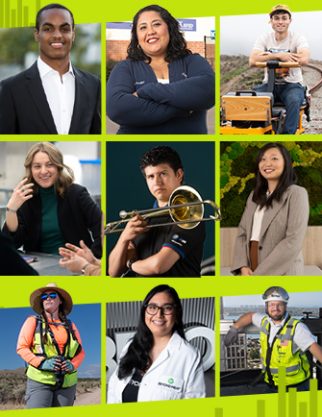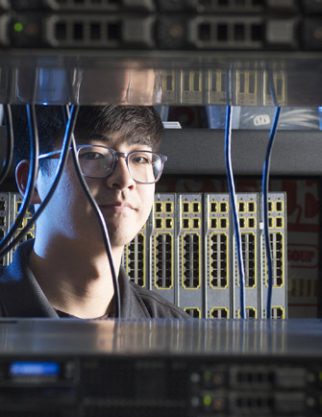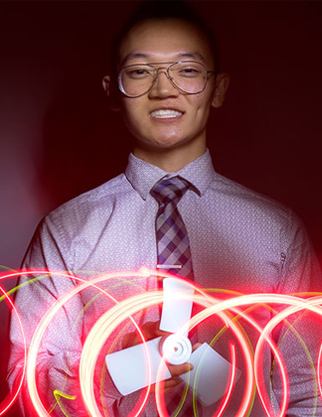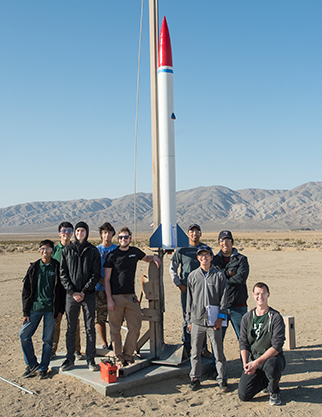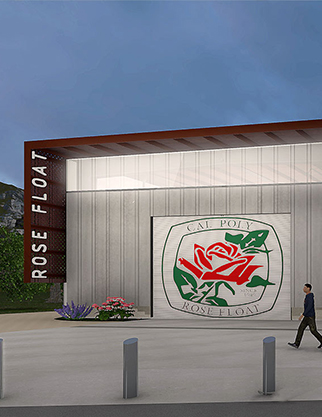Broncos On The Rise
Meet 15 Cal Poly Pomona Alumni Making an Impact Today
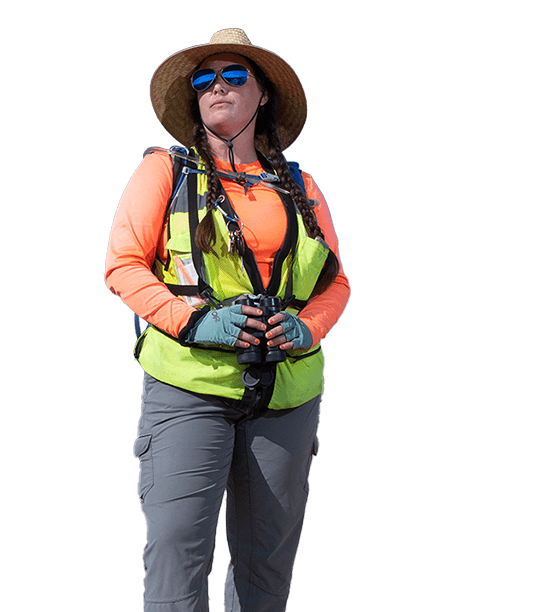

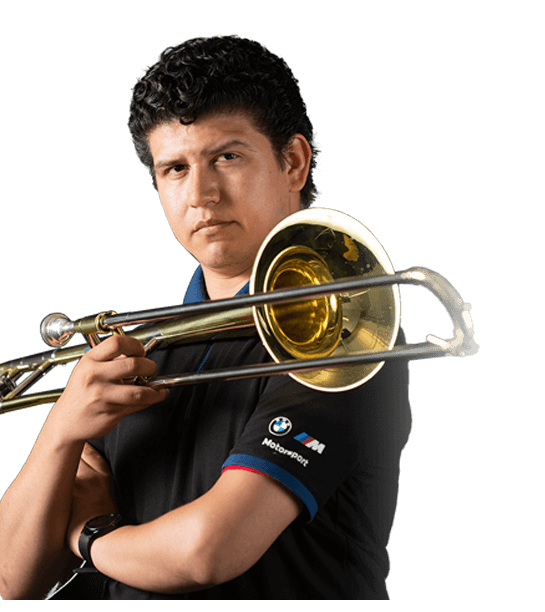

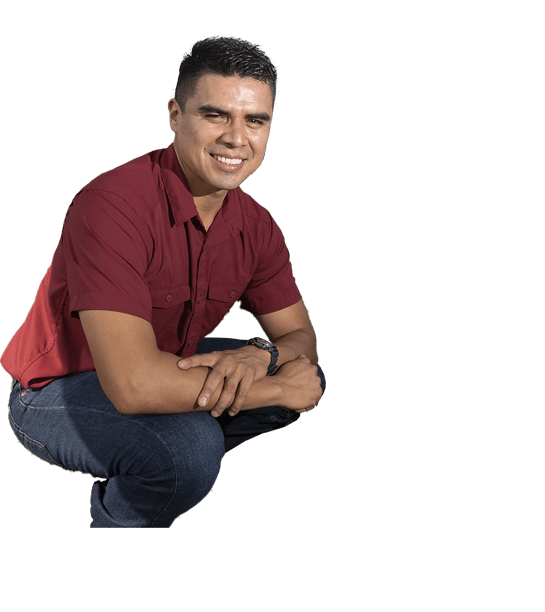
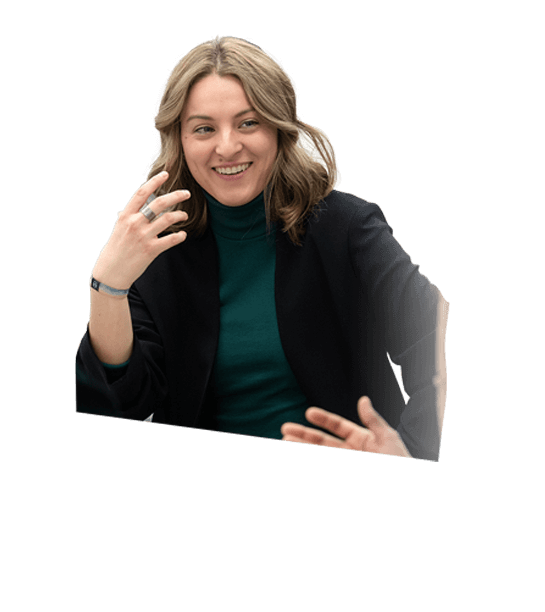
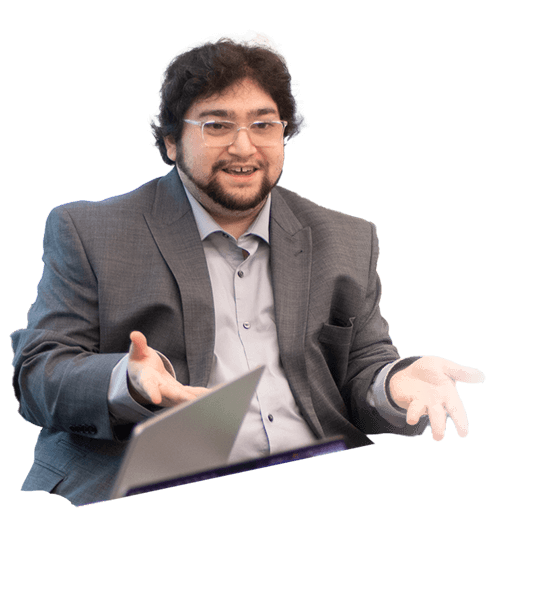


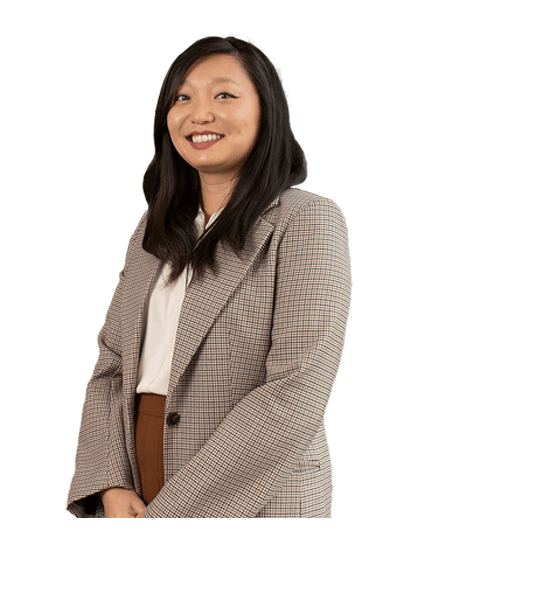
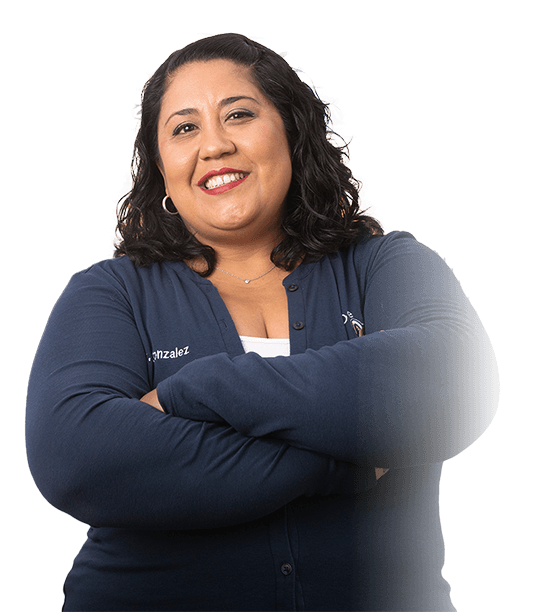
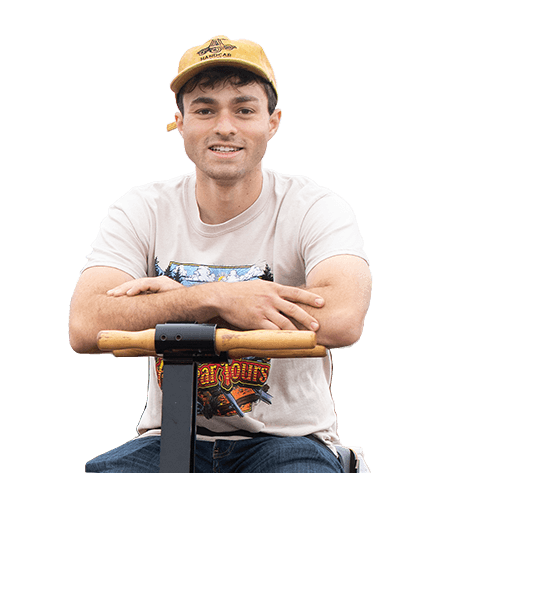

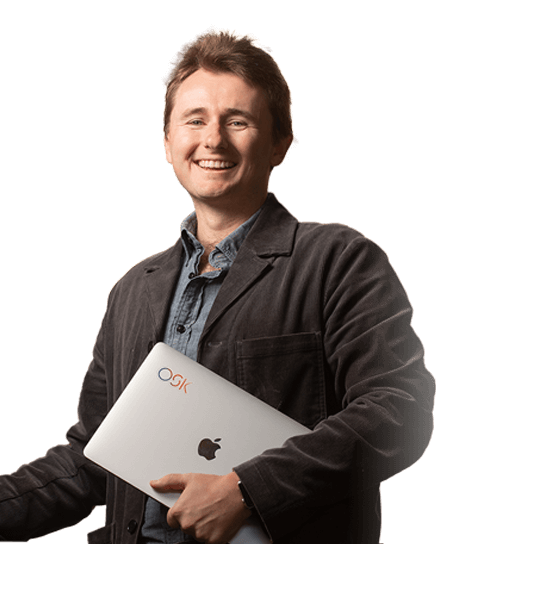
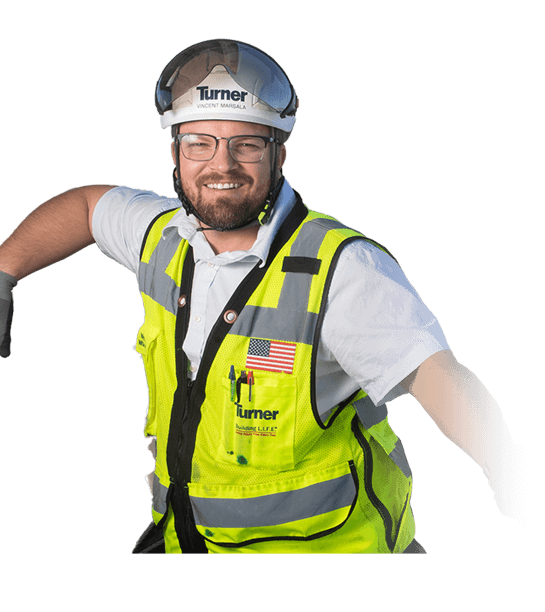
The first few years after graduating from college can be some of the most challenging. But when preparation and dedication meet opportunity, success is right around the corner.
These 15 Bronco alumni who all graduated within the past 10 years are making strides in their career industries, from engineering and construction to agriculture to hospitality.
Meet 15 Cal Poly Pomona Alumni Making an Impact Today


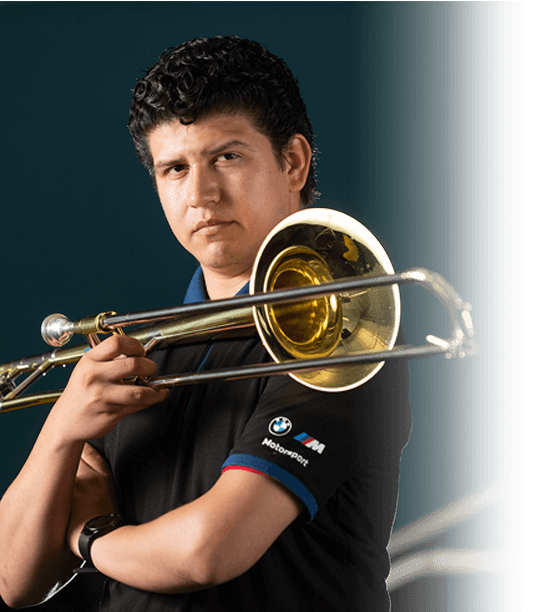




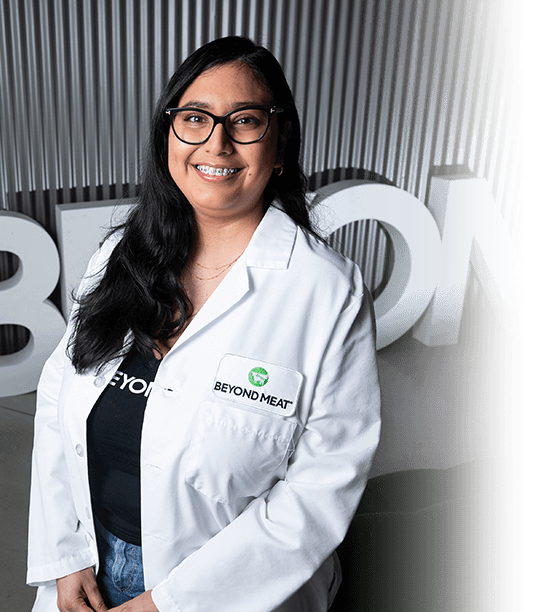
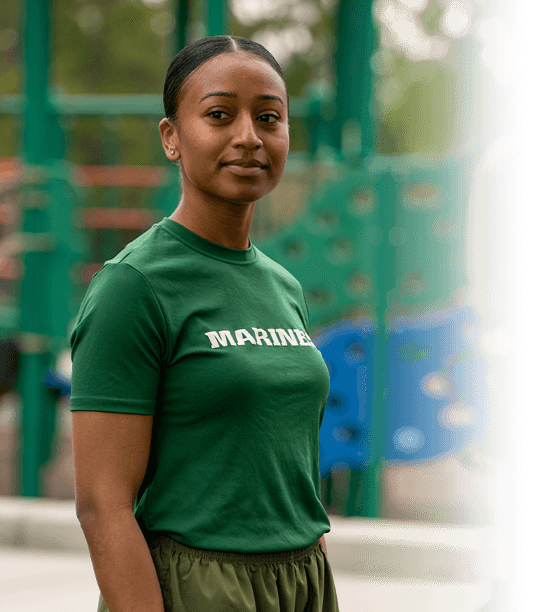
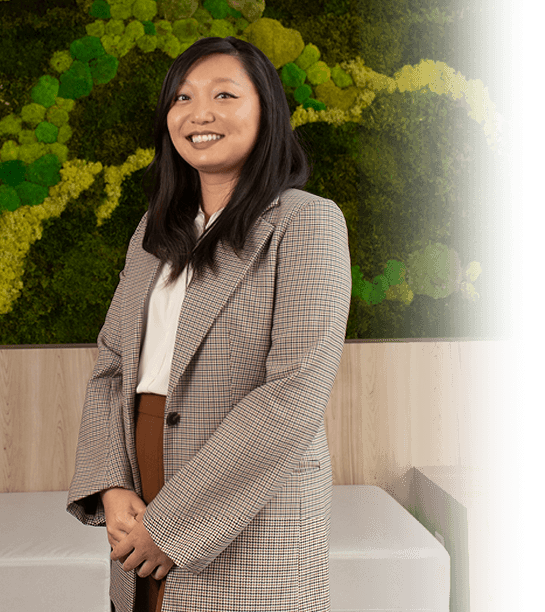
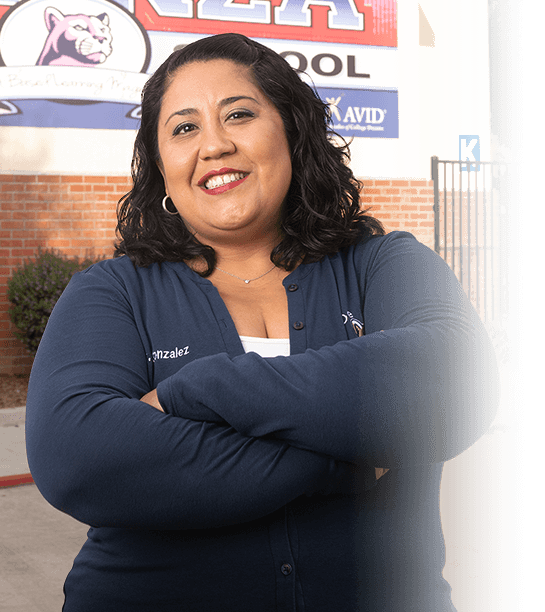
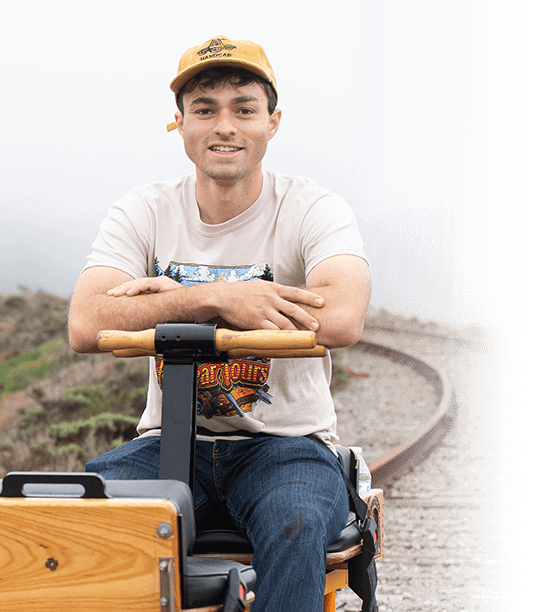
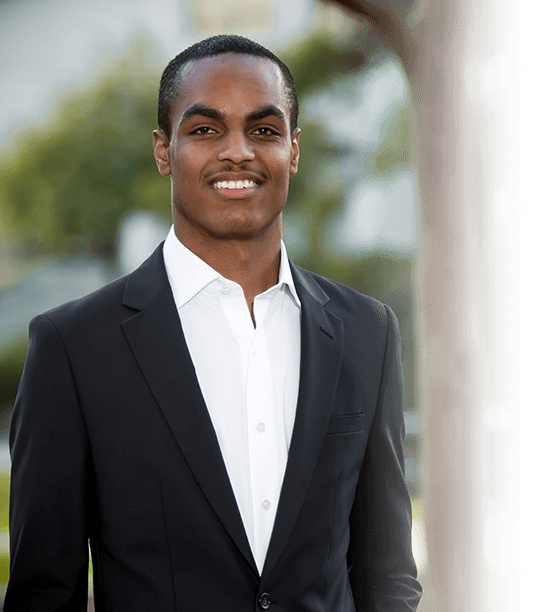
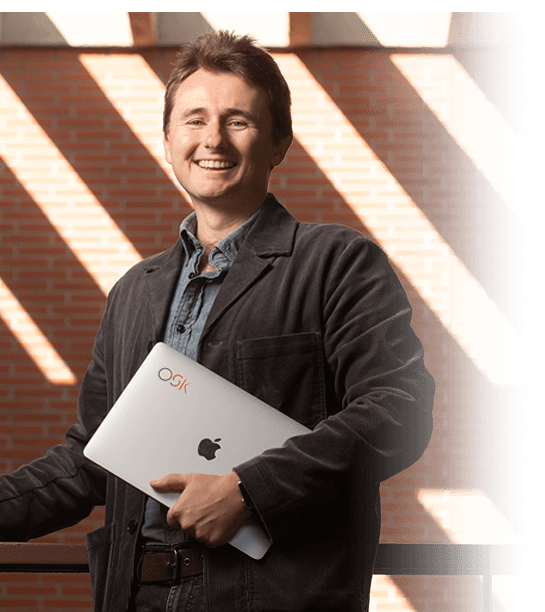
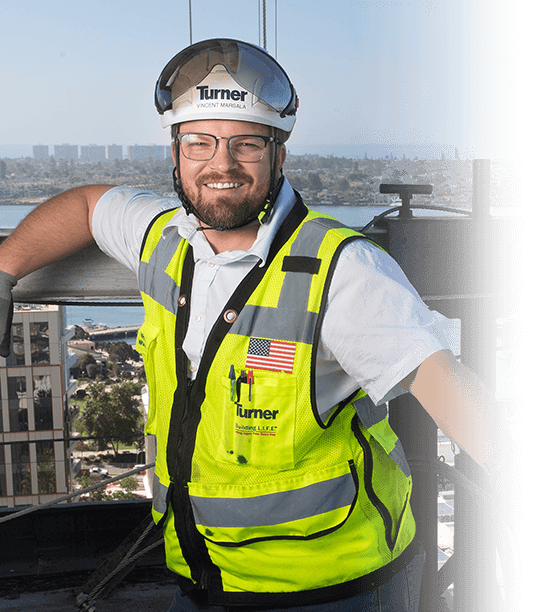
Alexandra Dorough The Plant Whisperer
Alexandra Dorough flourishes while protecting California’s flora and fauna

Alexandra Dorough flourishes while protecting California’s flora and fauna

Alexandra Dorough’s chosen career would not appeal to everyone.
For starters, there’s the 4 a.m. wakeup time so that she can be out the door by 5 for the long drive to job sites, many of them in the Mojave Desert. Then there’s the gear she needs to protect her from the elements as she spends hours painstakingly pacing the desert floor, ever on the lookout for rare plants such as western Joshua tree (Yucca brevifolia) and alkali mariposa lily (Calochortus striatus).
But Dorough (’20, environmental biology) — who began her job as an assistant biologist in the Redlands office of ECORP Consulting Inc. in February 2020, just weeks before COVID-19 pandemic restrictions went into effect — enjoys the mix of outdoor fieldwork and in-office report writing.
“It’s really great, never the same,” she says.
Dorough and her ECORP colleagues are on a mission to help developers in California comply with state and federal environmental laws as they plan and build projects, and to ensure that they do not ride roughshod over the state’s many threatened and endangered plants and animals. ECORP consults with public and private clients.
“Say there is a proposal to build a housing development on pretty much untouched land,” Dorough says. “It’s our job to survey that land for endangered and threatened plants and animals.”
Dorough grew up in Claremont and spent about three years completing her required general education courses at Mt. SAC in Walnut. Craig Petersen, a Mt. SAC biology professor, planted the seeds of her interest. She then transferred to Cal Poly Pomona, where she took botany classes with Edward Bobich, a professor in biological sciences, who helped strengthen her interest in California’s diverse flora.
“Say there is a proposal to build a housing development on pretty much untouched land,” Dorough says. “It’s our job to survey that land for endangered and threatened plants and animals.”
Dorough acknowledges that she didn’t grow up in a family that regularly hiked and camped.
“If you had asked me at 19 if I was outdoorsy, I wouldn’t have said yes,” she says. “Now I totally am, especially during the February-to-July field season.” (But she hasn’t sworn off her former “girly-girl city girl” persona. “I wear long acrylic nails during the off-season,” she quipped.)
The outdoorsy Dorough has spent hours documenting the Mojave’s spindly Joshua trees, which for years have been ravaged by air pollution, rising temperatures and wildfires. She also has surveyed for animals including desert tortoise (Gopherus agassizii), desert kit fox (Vulpes macrotis arsipus) and burrowing owl (Athene cunicularia).
She wonders how the recently enacted Western Joshua Tree Conservation Act will affect the species. The new legislation prohibits unpermitted removal of Joshua trees and creates a fund to acquire and manage habitat. Developers who remove Joshua trees to build renewable energy or housing projects would be required to pay into the conservation fund.
Dorough says she feels fortunate to be working in a career that allows her to make a difference for nature. She says she believes that she and her colleagues can help threatened and endangered plants and animals to recover.
“I’m still growing my skills,” she says. “There is so much for me to learn.”
She’s contemplated going back to school to get her master’s degree, but for now, she is delighted to be part of the effort to protect California’s shrinking population of Joshua trees.
“I’m just glad that more people are falling in love with them,” she says. “This is the only chance they have.”

James Fu The Restaurateur
James Fu Helps Open Restaurants, Ensure Food Quality at Din Tai Fung

James Fu Helps Open Restaurants, Ensure Food Quality at Din Tai Fung

A key ingredient in the recipe of James Fu’s success in the restaurant industry was early advice from a mentor to find and follow his passion.
Fu (’18, hospitality management) was deep into STEM classes at Pasadena City College and planning to pursue a degree in engineering when a physics professor observed that Fu had the ability to do the coursework, but he didn’t feel Fu’s love for it.
“He asked me, ‘How would you feel if you didn’t have the passion for it? Would you be ok?’” Fu says.
Fu, who was already working in the restaurant business at the time — he was a server at a hot pot restaurant and later ran a popular boba shop — realized that becoming an engineer was more about pleasing his parents than pursuing his purpose.
What Fu loved was working in restaurants.
“I have always had a passion for serving guests. That’s what makes me fulfilled,” he says. “It is something you can see directly because you interact with the guests. You can see if they are satisfied. Guest satisfaction is something I really care about.”
Fu, who was born in Oakland and raised in Taiwan and Belize, has been working at the popular dumpling chain Din Tai Fung for the past 10 years, putting his guest satisfaction skills to the test. He started as a busser and was promoted to server in a couple of months. The job helped him pay his way through Cal Poly Pomona’s hospitality management program. After earning his degree, Fu advanced to manager, general manager, regional manager and most recently the company’s corporate chef in 2022.
“I have always had a passion for serving guests. That’s what makes me fulfilled,” he says. “It is something you can see directly because you interact with the guests. You can see if they are satisfied. Guest satisfaction is something I really care about.”
His role involves visiting various locations, mostly in California and the Pacific Northwest, to audit the food and ensure the taste and quality is the same and meets the company’s high standards. He assists with the opening of new restaurants, helps train staff and makes sure the recipes are clear and easy to follow.
Din Tai Fung, which got its start in Taiwan 50 years ago, is now global – with more than 170 locations around the world. The United States has 14 locations, with restaurants in Arcadia, Glendale and Los Angeles as well as additional restaurants coming to Brea and Downtown Disney in 2024.
Although not a classically trained chef, Fu spent time in his grandma’s teppanyaki restaurant and has learned every aspect of running the restaurant, including the art of crafting Din Tai Fung’s iconic Xiao Long Bao or soup dumpling. Recently, he added a new item to the menu – a chicken soup dumpling inspired by the ultimate comfort dish, chicken noodle soup.
Fu developed and tested 30 to 40 recipes before coming up with the final version, even letting his mom test taste it before it was finalized. Din Tai Fung is known for its pork soup dumplings, but Din Tai Fung opted to come up with a recipe that was more in line with what customers in the United States prefer.
“For the American market, pork is not the top choice. Chicken is a better option. That’s why we had the goal to create chicken soup dumplings,” Fu says. “It’s something we had to build from scratch. And it gives you that comfort feeling because you can really taste the chicken noodle soup.”
“That desire to give people a sense of comfort is fundamental to Fu,” says Margie Jones, dean of The Collins College of Hospitality Management. His hospitable nature and desire to make others happy is something that Jones observed when Fu worked at The Restaurant at Kellogg Ranch (RKR), where he was a student assistant to the instructor.
“It’s an honor to be a student assistant in the restaurant. It shows that you have demonstrated in the course that you have the skillset and ability to lead your peers,” Jones says. “He was wonderful and made the students feel comfortable.”
In Jones’ Wines of the World advanced course, Fu served as a teaching assistant, preparing food that would pair well with the wines the students were tasting.
“He came with a foundational understanding of cooking,” she says. “If I was doing a French wine and wanted to have roast chicken with it, he knew how to do it. It was second nature for him to take it to a place where it could be easily eaten. It was nicely seasoned. He has a good palate.”
Fu still gives back to CPP, participating in career fairs and volunteering to serve as professor for a day. He credits the hospitality program, particularly his time at The Restaurant at Kellogg Ranch with helping him get to his current level of success.
“I loved RKR so much,” he said. “At RKR, I started as front of the house, but I needed to challenge myself. I told the professor I wanted to go to the back of the house, to do food preparation. I still implement a lot of the knowledge I learned at Collins today.”

Jose Patino Plascencia The Young Maestro
Music Alumnus Takes Dudamel’s Advice to Heart: ‘Be Yourself’
Music Alumnus Takes Dudamel’s Advice to Heart: ‘Be Yourself’

Jose Patino Plascencia is a musical dreamer, a fledgling maestro who wears multiple hats: Los Angeles Philharmonic YOLA (Youth Orchestra Los Angeles) director of bands at a Los Angeles charter high school, trombone teaching artist with the YOLA National Institute and at the charter school and wind band conductor with the Harmony Project, a YOLA partner that instructs low-income children about classical music.
And he is a Dreamer. He is one of the hundreds of thousands of young adults who as children were brought, without documentation, to the United States. Because of legislative and legal bickering, Dreamers’ status is in limbo, but they are allowed to work, travel and attend college.
Patino (’21, music) was born in 1994 in Guadalajara, Mexico. A year later, his family left Mexico when the country was in economic crisis and settled in Pomona.
Music has always been a part of his family’s story. In Mexico, his father sang in a church choir, which once performed at Vatican City, among other places, during a European tour.
His mother encouraged him to try music in elementary school. “If you don’t like it after a year,” she told him, “you have my permission to quit.” He never quit.
Patino took up the flute and kept at it for 11 years, until a need at his high school prompted him to make a dramatic switch.
“We needed a trombone player to be in front of the marching band,” he remembers. Other students showed him the basics of slide positions, and he taught himself enough to get by on the trombone until college, when he began to take the instrument more seriously.
At Mt. SAC, he studied for two years with Lori Stuntz, a freelance trombonist and faculty member who also teaches at Cal Poly Pomona, Glendale Community College and Los Angeles City College.
“She taught me everything,” he says. “If it wasn’t for her, I wouldn’t be where I am today. She set the foundation.”
After his time at Mt. SAC, he took a break and worked for school districts. Ontario-Montclair School District, for example, hired him to build the curriculum for its after-school music program and to teach and tutor students.
At Cal Poly Pomona, he was reunited with Stuntz and also studied with Professor Janine Riveire, who leads the music education program and is a longtime member of the American String Teachers Association. Riveire was a big draw then and continues to invite Patino back once a year to work with student musicians.
“She was one reason I decided to go to Cal Poly Pomona,” Patino says. “She is a leader within the world of pedagogy.”
Associate Professor Jessie M. Vallejo, who directs the university’s mariachi ensembles, helped him explore the music of Latin America, expanding his range beyond the Western music that had been his focus.
These instructors, Patino says, “formed the pillars for the way I teach and communicate. They set high expectations but were also nurturing and caring. They are the gems of the music program. Without them, I wouldn’t have made it this far.”
Mike Zonshine, who taught trumpet, was another guiding light.
These instructors, Patino says, “formed the pillars for the way I teach and communicate. They set high expectations but were also nurturing and caring. They are the gems of the music program. Without them, I wouldn’t have made it this far.”
Conducting had long been in his mind, with Gustavo Dudamel — the dynamic Venezuelan music director of the LA Phil, who is the best-known product of Venezuela’s El Sistema youth orchestra movement — as motivation. In 2010, when Patino was in high school, he saw a video of Dudamel’s Simón Bolivar Youth Orchestra performing “Mambo” from Leonard Bernstein’s “West Side Story.” He was hooked but realized he needed to chart an educational course before attempting to take up the baton.
“That was the end goal, to be a conductor and teacher,” he says. “I enjoy playing my instrument, but I really enjoy waving the baton and teaching my students.”
The dreamer is now living that dream as a YOLA trombone teaching artist and conductor who has met Dudamel not once but twice (in 2021 and 2022). Patino proudly posted photographic proof on his @jpatino101 Instagram account.
During his undergrad years, Patino tended to mimic his teachers’ conducting styles. When he met Dudamel, he asked: “How do you do stuff with your hands to command the orchestra?”
Dudamel’s reply: “Be yourself. Don’t try to be anybody else. You have to be yourself onstage. Whatever you do with your hands, it has to be you, and it has to be original.”
“I’ve taken that to heart,” Patino says.
The young maestro wields his baton in his right hand with a light, confident touch. Under his full head of dark hair, the expressions on his youthful face range from serious to lighthearted depending on the music’s mood.
Amid many thrilling conducting experiences, he singles out two: a 2022 conducting symposium at Cal State LA, where he was asked to conduct from memory, without a score on his stand, and a workshop over the summer at Caltech, where he worked with H. Robert Reynolds, the principal conductor of the wind ensemble at USC’s Thornton School of Music.
“He was full of wisdom,” Patino recalls. “It was like talking to Master Yoda.”
Patino embraces the mad whirl of his six-days-a-week schedule, which requires him to drive his beloved 2017 Mazda Miata for 50 miles or more a day around Southern California.
Five days a week, he works as the band director at the Dalzell Lance high school campus of Camino Nuevo Charter Academy in the Rampart Village neighborhood of Los Angeles. Four evenings a week, he is the trombone teaching artist at the nearby Camino Nuevo YOLA site, where he teaches middle school students.
On Wednesdays, he conducts the Harmony Project wind band in Paramount. On Saturdays, he works as the YOLA Institute trombone teaching artist at the Beckmen YOLA Center in Inglewood. Recently, he was named youth orchestra conductor for the Harmony Project RYO (regional youth orchestra) in Torrance.
He finds time to pursue interests aside from music. In addition to his 2017 Miata, he owns a 1991 first-generation Miata. He enjoys cooking and watching Petrolicious YouTube videos, geared to classic car enthusiasts.
At some point, he plans to pursue a master’s or a doctorate. For now, he feels lucky to be embodying his dream of helping students improve their musical skills.
“Everything gets better and better,” he says. “It’s still kind of surreal.”

Courtney Yu The Tech Promoter
Marketing Alumna Navigates the Tech and Mobile Gaming World

Marketing Alumna Navigates the Tech and Mobile Gaming World

Not long after graduating from Cal Poly Pomona, Courtney Yu has found a career she loves in mobile gaming, an innovative and ever-evolving industry.
“If you’ve heard of Pokémon GO, you’ve heard of Niantic,” says Yu (’20, marketing management), an associate product marketing manager at San Francisco-based Niantic.
Since she joined the company in 2022, Yu has helped launched two mobile games — NBA All-World and Monster Hunter Now, which released in September 2023. As a product marketer, part of her job is helping to ensure that Niantic’s games, new features and updates get broad visibility among current and new players. Yu is currently working to promote Pokémon GO.
“For example, I worked with mobile app stores like Apple and Google to gather all of our assets like our key art, video assets, etc. to make sure that we’re featured on the app stores,” she says. “I also helped our live events team to plan what we want to do at events, like South by Southwest and PAX West, and fill in the gaps.
“My role in product marketing is very much like a Swiss army knife,” she says. “It’s super broad but also very fun and very rewarding, especially when you’re working in such a cool industry like gaming.”
Throughout her academic and career journey, Yu says she had great faculty, staff and peer mentors who guided her along the way, from inspiring her in class to prepping for job interviews to supporting her as a student club leader.
At Niantic, she met a fellow Bronco and mentor in Andrew Macintosh (’13, marketing management), who was on her hiring panel. Yu says she had heard of Macintosh, who helped organize the first Bronco Startup Challenge in 2012 when he was an undergraduate at Cal Poly Pomona.
“Andrew was a great mentor. We always made time to talk about my career growth, what I wanted to do, what I wanted to accomplish and what were my next steps,” Yu says. “He really taught me the foundations of product marketing, and at Niantic we were able to launch a game together.”
“My role in product marketing is very much like a Swiss army knife,” she says. “It’s super broad but also very fun and very rewarding, especially when you’re working in such a cool industry like gaming.”
Yu is enjoying all aspects of her role, including attending premiere tech and creative events like SXSW to working with team members across the globe to receiving user feedback.
“Honestly, I love hearing the community feedback. I love it when people say they love our game. It gives like a really great sense of validation that all the hard work that we put into is paying off,” Yu says. “I also really like it when people have valid criticisms of our game. That means people care enough about our game to actually put in critical feedback for our team to take in.
“It’s rewarding to have launched a game. Not many people can say that, because it takes so many years to develop a game. I just got very lucky with the timing that I was able to join Niantic and joined the different teams that I was on.”

Cornelio Blanco The Grower
Childhood Summers Plant Seed of Love for Farming for Ag Alumnus
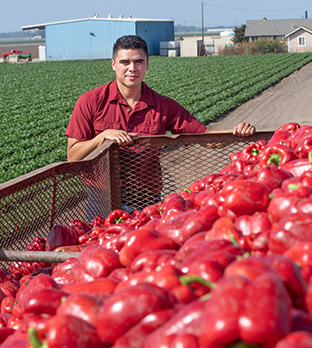
Childhood Summers Plant Seed of Love for Farming for Ag Alumnus

Cornelio Blanco learned more than just how to work the land while spending summers in Jalisco, Mexico, farming sugar cane with his grandfather.
He also learned valuable lessons about how to approach life that have stayed with him. It wasn’t just about cultivating the land. It was about cultivating a mindset and a passion that Blanco has to this day.
“Raised by my grandfather for a good part of my life, his old-school wisdom became my guiding beacon,” Blanco says. “It was there that I inherited my work ethic – an understanding that perseverance and composure pave the way. Staying grounded became my mantra, a belief that aligns everything in life towards one’s path.”
That focus and determination helped Blanco (’17, plant science) as a student at El Camino College and at Cal Poly Pomona. When applying to four-year universities, he thought about his summer work on the farm and decided to look for universities with good agricultural programs. At Cal Poly Pomona, he was able to put his experience to use and gain more working the campus’ Spadra Farm.
“I really enjoyed my soil, biology, botany and chemistry classes,” he says.
After graduating, he interned for a nursery in San Ramon and quickly received four job offers. For his current position as a farm manager at Rio Farms in Camarillo, Blanco met with co-owner Steve Gill.
“After an hour-an-half interview, he said, ‘When can you start?’” Blanco recalls. “He hired me immediately, and I am incredibly grateful and blessed.”
Although Blanco was relatively fresh out of college, Gill says he didn’t have any qualms about hiring him for a management position. Blanco had the degree, was fluent in Spanish and had a great personality, which all worked in his favor, according to Gill, who graduated from Cal Poly San Luis Obispo.
“He didn’t have much experience, but that is probably better for us because he wanted to learn and we are teaching him everything we can,” Gill says. “He’s patient, he listens and he is willing to learn whatever it takes to get the job done. He’s not afraid of working hard.”
After two years as an assistant farm manager, Blanco was promoted to farm manager. In his current role, he plays a vital role in managing daily operations, organizing pesticide sprays, handling ground preparation and overseeing transplant crews.
The farm has a little over 1,300 acres, growing celery, green cabbage, peppers and lima beans, depending on the season.
During a recent morning at Rio, Blanco stops to chat with workers getting ready to transplant celery plants into the ground of a tilled field. On a drive around the farm, he notes a leaking irrigation pipe that needs repair and stops to give a ride to a worker who needs to get to another section of the farm.
“It’s crucial to foster strong relationships with the team, letting them know I’m here not just to lead, but also to learn,” he says. “Building these connections takes time.”
He typically works six days a week, starting his day at 6:30 a.m. and ending around 4 p.m. on weekdays or at noon on Saturdays. In the late afternoon, he often heads to the gym or takes a stroll with his girlfriend, Brendy Orozco (’19, plant science), who works as a compliance coordinator for TriCal Diagnostics, a company specializing in diagnosing plant diseases.
“I genuinely cherish the atmosphere and the work culture,” Blanco says. “Even though I might not know the workers very well individually, I consider them family. I strive to maintain open communication and build trust with them to provide support. We prefer a close-knit crew to ensure better earnings for our workers rather than hiring extensively. Also, I take pride in ensuring the farm looks immaculate.”
His main challenge lies in managing a team at a relatively young age. Blanco was 25 when he started at Rio Farms, considerably younger than many of the workers he supervises, some of whom have worked at the farm for 30 to 40 years.
“It’s crucial to foster strong relationships with the team, letting them know I’m here not just to lead, but also to learn,” he says. “Building these connections takes time.”
Blanco actively seeks opportunities for personal and professional growth, aspiring to evolve further as a leader.
In 2022, he was selected as a fellow in the California Agricultural Leadership Program. In the rigorous 17-month program, the fellows study a variety of topics, from leadership theory to effective communication to emotional intelligence.
The program is a partnership between the California Agricultural Leadership Foundation and Cal Poly Pomona, Cal State San Luis Obispo, Fresno State and UC Davis, and includes national and international trips. Blanco and other fellows traveled to Washington, D.C., to meet with representatives from the U.S. Department of State, the U.S. Environmental Protection Agency, the Department of Labor, the Panamanian embassy and the U.S. Congress. In November 2023, they visited Panama, Ecuador and Colombia for their international seminar.
It’s very competitive to join the program, Blanco says, adding that while hundreds apply, only 24 individuals are selected as fellows. Blanco credits the program with helping him to become more compassionate and empathetic.
“The program isn’t solely about learning leadership from textbooks; it’s an opportunity to explore and understand yourself on a deeper level. You’re given the chance to share your own narrative and experiences,” he says. “It teaches the importance of listening before responding to any situation. This learning has brought me significant self-awareness, impacting not only my interactions with employees but also within my family and personal life.”
Blanco believes in the importance of continuing to strive and grow.
He understands the agricultural aspects of running a farm, but he hopes to continue to learn more about the business side. Blanco hopes to pursue an MBA from CSU Channel Islands.
And like his grandpa, he hopes to share his love of the land with other agricultural graduates.
“I believe I can contribute to Cal Poly Pomona by introducing students to the farm,” Blanco expresses. “Many young individuals are uncertain about opportunities with an agricultural degree. Inviting them for a visit here allows them to explore. Rio Farms welcomes students anytime.”

Isabel Gutierrez The Girl Boss
CEO and Engineer Has a Vision to End Human Suffering
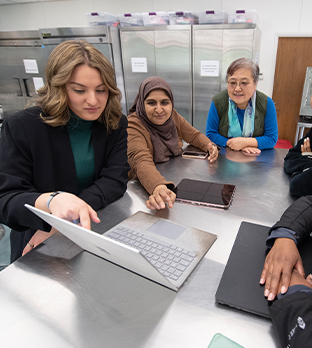
CEO and Engineer Has a Vision to End Human Suffering

Upon completing her last final exam for a bachelor’s degree in mechanical engineering in December 2019, Isabel Gutierrez was already charting a course for success.
As the founder and CEO of Vistendo Inc., a preventive health startup for athletes, she was also celebrating a significant milestone — a $250,000 SBIR Phase I grant from the Department of Defense.
Guided by the vision of “ending human suffering,” Vistendo aims to create accessible technology for early detection of health issues for athletes. The company also plans to use the technology to help soldiers. The journey began with securing initial funding from the U.S. Defense Health Agency’s Small Business Innovation Research grant program to develop a portable, battlefield-ready device to detect traumatic brain injury symptoms in U.S. troops and veterans.
“So, I set out to make it. As a mechanical engineering student at Cal Poly Pomona, I had access to tools, experts, and resources to develop my own technology,” says Gutierrez (’19, mechanical engineering).
Gutierrez comes from a sports-oriented family with a strong affinity for soccer. Growing up, bumps and bruises were part of the game.
However, life took an unforeseen turn during her early days at Cal Poly Pomona when her sister encountered an injury — struck in the back of the head by a soccer ball. Weeks of undiagnosed suffering followed, marked by headaches, sensitivity to brightness, and even undergoing personality changes. Undeterred, her sister persisted in playing soccer, not knowing that a second impact to the head was potentially life-threatening.
Weaving her personal story and academic experiences at Cal Poly Pomona, Gutierrez was inspired to start Vistendo Inc. as an undergraduate.
“So, I set out to make it. As a mechanical engineering student at Cal Poly Pomona, I had access to tools, experts, and resources to develop my own technology,” Gutierrez says.
Vistendo has gone on to create a comprehensive solution, both an artificial intelligence-infused mobile app and a full spectrum device all crafted with the singular purpose of helping athletes look after their bodies and know when to seek care. The company’s innovative, noninvasive full-spectrum oculomotor device, which has garnered almost $2 million in SBIR funding, will assist with objective traumatic brain injury assessment, be it on the sidelines for athletes or the battlefield for troops. Currently undergoing a clinical study at Johns Hopkins Brain Injury Outcome Center, it is being compared to existing clinical devices for enhanced accuracy and efficacy.
In a testament to Vistendo’s impact, the company recently was awarded $1.5 million from the U.S. Defense Threat Reduction Agency (DTRA) for early warning and prediction of chemical and biological threat exposure and a $500,000 grant from the U.S. Defense Health Agency (DHA) to modify their commercial mobile app built to streamline health and injury communication for military use to aid service members with fitness optimization and readiness management.
Beyond running her business, Gutierrez remains connected to Cal Poly Pomona. She serves as an industry mentor and donor, fostering dynamic engagement with students and faculty, and setting up funded research projects that harness the skills of CPP students to work together to realize the goal of ending athlete suffering. Reflecting on her past, Gutierrez fondly recalls the invaluable lessons and opportunities bestowed upon her by the dedicated faculty and staff at the College of Engineering, NSF-funded I-CORPs program and the Bronco Recreation and Intramural Complex (BRIC) that have played a pivotal role in her professional trajectory.
“I’m especially excited to return to Cal Poly Pomona to create a multi-departmental collaborative research project that will allow Cal Poly Pomona students to work together alongside industry professionals on a real-world project,” Gutierrez says. “I’m so thankful for the guidance and support of my family, my advisors, my team and the resources provided by Cal Poly Pomona.”

Zane Landin The Storyteller
Exploration Helps Communication Alumnus Find His Voice and Purpose
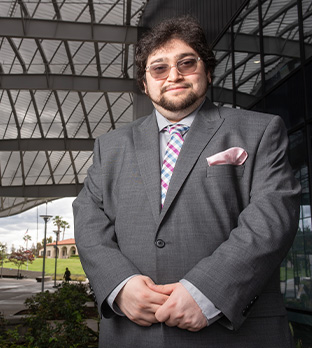
Exploration Helps Communication Alumnus Find His Voice and Purpose

For Zane Landin, figuring out his career path proved to be a study in exploration.
As an undergraduate, Landin (’22, communication) took a variety of classes from philosophy to psychology to see what he connected with most. Going into his fourth year of college, he was majoring in science, technology and society when he decided to switch to a communication major. At the time, he was serving as the president the student-run College of Education and Integrative Studies (CEIS) Council, which had a goal of improving its communications efforts across the college and on campus. A light came on.
“I didn’t realize at the time that I was doing a lot of communications work,” he says. “That was my inspiration to switch. I felt I was on the right path for what I wanted to do.”
Ashley Jones, a former communications specialist with CEIS who now works as San Bernardino County’s deputy public information officer, recalls that she first met Landin in 2017 when he was elected by his peers to serve as the council’s director of communications, and she was the group’s advisor. She describes Landin as “highly ambitious, energetic, caring and a hard worker.”
“I could see that communication and storytelling was his true passion. He became influenced by some of the work that I did as the CEIS communication specialist, and he saw how he could make a positive difference in the lives of others,” Jones says. “He took his time to come to the decision of changing majors. His first task was to get experience in the field. At that point, I hired him as a communication intern to assist in the production process of our video podcast program, develop graphics for CEIS events and provide support to our Partners in Education fellowship program.”
“When you are doing communications, your job is never stationary,” Landin says. “I find it exciting. I love telling other people’s stories.”
That passion for communications has provided Landin, a first-generation college student, with various opportunities from internships with NASA and General Motors to a trip to the White House to participate in the first-ever Mental Health Youth Action Forum. Landin has been an advocate for mental health for several years.
The Chino native has been working as an internal communications specialist at the National Geographic Society in Washington, D.C., one of the largest nonprofit scientific and educational organizations in the world. It was founded in 1888 and operates separately from the magazine. He writes and edits two newsletters every week and runs the organization’s internal website.
However, he will head back to California in April to take on the role of an associate product marketing manager at Google as part of a two-year program the tech giant offers.
Through his work with National Geographic, Landin has met global explorers and brilliant minds from Botswana and Mexico. It is a whole different kind of exploration from his college days and seldom dull.
“When you are doing communications, your job is never stationary,” Landin says. “I find it exciting. I love telling other people’s stories.”

Miriam Abundez Guerra The Taste Innovator
Miriam Abundez Guerra Helps Create and Test New Flavors at Beyond Meat
Miriam Abundez Guerra Helps Create and Test New Flavors at Beyond Meat

Miriam Abundez Guerra’s love of cooking dates to the days when she was a little girl helping her mother cook meals for the family.
She didn’t relish being in the kitchen initially, but as the years went by, Abundez Guerra (’19, food science and technology) really got into cooking and baking.
“We didn’t have a lot of money growing up,” she says. “If my friends and I had $10, we would say let’s go to the store, buy some ingredients and see if we can make a cheesecake.”
Years later, the CPP alumna spends most of her time in professional kitchens, working in research and development for Beyond Meat, the El Segundo-based company that produces plant-based meat substitutes. Her job is to make new products. Sometimes, inspiration strikes for a new idea, and research and development sees if the public has an appetite for it. Other times, a customer will pitch something, which she finds the most exciting.
The company recently launched a seared beef tips substitute, a product that Abundez Guerra briefly worked on in flavor development.
“It’s different every day,” Abundez Guerra says. “It’s fun to be creative. If you do see something, come to fruition, you can say, ‘I was a part of that.’”
Abundez Guerra joined Beyond Meat in 2020, working her way up from a lab assistant to a food technologist. Her job often requires her to break new ground through research, as Beyond Meat is among the most innovative companies making vegan products. A typical day includes following up on previous food experiments, making and testing batches of products, collaborating with suppliers and meeting with customers.
“One day at 9 a.m., I ate a bunch of burgers,” she says.
Even though Abundez Guerra loved to be in the kitchen growing up, she wanted to be a scientist, not a chef or baker. She knew that Cal Poly Pomona had a food science and technology program but came in as a chemistry major.
“It’s different every day,” Abundez Guerra says. “It’s fun to be creative. If you do see something, come to fruition, you can say, ‘I was a part of that.’”
Still, the pull toward food remained. In one of her undergraduate classes, she was assigned to write an essay on what she was most passionate about and chose cooking and baking as her topic.
After three or four years as a chemistry major, she switched to food science and technology. It was an easy transition for her because the program requires a minor in chemistry or microbiology, she says.
While at CPP, she worked full-time at Mission Foods in Rancho Cucamonga, conducting food safety inspections. She was hired as an intern in 2018 at Fruitripe, a small Riverside-based company that gets imported fruit from different countries, ripens it in the United States and distributes it to grocery stores. After graduation (in which Abundez Guerra was the first in her family to finish college) the three-month internship turned into a full-time job.
Now, at Beyond Meat, Abundez Guerra gets to do what she has always loved to do since she was a teen in the kitchen with her friends — play with food.
“I meet a lot of brilliant people here. We have people who are passionate about our mission,” she says. “I really enjoy my job. It’s fun, and I have a lot of autonomy too. I am getting paid to cook and pursue my passions.”

Eliana Scott The Marine
Aspiring Astronaut Soars Over Obstacles on Path to Her Dreams

Aspiring Astronaut Soars Over Obstacles on Path to Her Dreams

The Marine Corps officer candidate training requirement is 23 pull-up repetitions for men. For women, it’s 11.
When Eliana Scott heard of this discrepancy, it sparked motivation for some extra preparation.
“I have a hard time seeing such differences… so I pushed myself to get 23 just like the guys do,” Scott says. “A lot of the girls asked me how I got to be able to do that and I said ‘Girls, I started from not being able to do any.’”
Dogged determination to defy expectations, sometimes even her own, have defined the last six years for Scott (’23, applied mathematics), during which the girl from Inglewood transformed into a Marine Corps second lieutenant, in pursuit of her dream to become an astronaut.
Scott navigated hurdles of all kinds on her way to not one, but two milestone accomplishments in 2023: obtaining her bachelor’s degree from Cal Poly Pomona in May and her Marine Corps commissioning in July. The hurdles outnumbered the accomplishments, and it wasn’t close: injuries from a motorcycle accident, working six days a week as a full-time student, a three-hour bus commute, a pandemic, technology challenges.
Those hurdles were a lot to grapple with considering Scott never thought she would go to college in the first place — her mother essentially applied to colleges for her. At her first advising appointment at CPP, she and advisor Benny Tillman scanned an alphabetical list of majors that began with aerospace engineering.
“I thought, ‘I can’t do that. Only smart people do that,’” Scott said. “I was looking for other things.”
Tillman told her she was capable. And with each challenge and achievement during her college career, Scott’s confidence grew.
The officer route also provided the chance to land in flight school, the first step toward becoming an astronaut. Scott’s dream was beginning to seem attainable.
“I reinforced that she has the capability of accomplishing anything,” Tillman says. “My goal is to never let a student feel like they are defeated.”
Scott majored in aerospace engineering before switching to applied math. Earning a college degree of any kind was something Scott had always aspired to, but her childhood dream was to join the military. That was her chance to become a superhero.
During her freshman year, she visited the Veterans Resource Center on campus. That’s where she found out about the Marine Corps officer training program, which would put her on a path to obtain a higher rank and better pay in the military. The officer route also provided the chance to land in flight school, the first step toward becoming an astronaut.
Scott’s dream was beginning to seem attainable. She would work six days a week to help pay for college. She would train with the Marine Corps for six weeks at a time in the summer. And she could graduate college with the STEM degree required to be admitted to flight school as a second lieutenant, and pursue the 1,000 hours of flight needed to apply to the astronaut program.
At this point, Scott felt light years away from the “girly girl” she once was growing up in Inglewood where the assumption of many was that she would pursue a career in cosmetology or a similar vocation.
“I had trouble with identity, who I wanted to be,” Scott says. “Growing up I just didn’t see too many people who looked like me going and being doctors or engineers or astronauts.”
Scott’s uncompromising drive is perhaps best exemplified by what happened at the start of her junior year after she returned from 12 rugged weeks at the Marine Corps base in Quantico, Virginia. Sleep deprived and mentally and emotionally exhausted, she gritted her teeth and worked her way through the challenges of a STEM curriculum.
Two weeks into her senior year, though, Scott was in a motorcycle accident during her commute to school that landed her in the hospital. Her injuries were such that she couldn’t walk for a brief period, much less attend school, bringing into question whether she could stay on track to graduate and maintain eligibility for the Marine Corps officer training program. Her professors explored many options as her situation unfolded, and with their support, Scott was ultimately able to complete her work remotely and in various creative ways to catch up.
Scott’s determination was put to the test in myriad situations during her college experience, but with the support of her Cal Poly Pomona network she prevailed to don her cap and gown and graduate in May 2023. Two months later in her dress-blue uniform, she was commissioned as a Marine Corps second lieutenant.
“Now I know it’s just about sticking to your goals,” Scott says. “At this point, I think anything is possible.”

Jennifer Cheng The Healthcare Design Planner
ENV Alumna excels as an ‘architect of care’

ENV Alumna excels as an ‘architect of care’

As a child of immigrants from Taiwan, Jennifer Cheng sensed that her parents wanted her to pursue a career as a doctor or a lawyer. As a youngster, however, she discovered that her passion was art.
At Glendora High School, teacher Aaron Ruiz introduced her to CAD (computer-aided design) software. She soon became hooked on design and drafting.
“He introduced me to the possibility that I could create new environments,” says Cheng (’13, architecture). “That was when I knew I wanted to get into architecture.”
As an architecture student at Cal Poly Pomona, Cheng took a healthcare studio design class taught by Hofu Wu, an architect, designer and building scientist (a professional who seeks to optimize a structure’s durability and indoor comfort) who is now a professor emeritus of architecture in the College of Environmental Design. Cheng credits him as an influential mentor who steered her toward her current career.
“I always thought working for an architecture firm was the only path forward,” she says. “Instead, he introduced our class to different thought leaders and broadened my perception of what we could do with our degree.”
In 2012, Hoag Memorial Hospital chose Cheng for an internship program. Hoag is a renowned Orange County institution that operates hospitals, including two main campuses, in Newport Beach and Irvine; urgent care centers; and health clinics and health centers.
For a few years after her internship, she worked as a contractor and a consultant to Hoag. In January 2018, the company brought her in-house to help with the planning and design of its growing portfolio of facilities.
“As a planner, I bring the pieces together and get to directly affect people’s lives for the better,” she says. “We want to make sure we deliver the best care environment possible for providers and patients and their families.”
In October 2022, Cheng was promoted to be senior program manager of planning and design.
“I am truly grateful,” Cheng says. “When I was fresh out of college, Hoag enabled me to truly develop myself. I learn something new every day.”
Cal Poly Pomona alumnus Sanford L. “Sandy” Smith (’79, architecture), Hoag’s senior vice president of real estate and facilities and Cheng’s current boss, has been a key mentor. He continues to coach her about how to think strategically. As a friend, he reminds her now and then that work-life balance can help provide new experiences that shape creative thinking. Smith and Cheng both volunteer with Cal Poly Pomona’s healthcare design advisory group, which organizes lectures, topics for studio classes and site visits for students.
Working with students provides opportunities for Cheng to share the obstacles she encountered in her college years and how she overcame them. Cheng entered Cal Poly Pomona’s five-year Bachelor of Architecture program in 2007. Early on, she waffled about her chosen path and sought out experiences to expand her horizons. She took six years to finish the program.
As a medical facility planner for Hoag, she connects corporate leaders with design, construction and operations teams. She seeks to bring to fruition the executive team’s vision of expanding access to specialized quality care.
She works with clinical providers, operators and key stakeholders to help develop a preliminary program. She then must develop a financial business case to secure funding approval. Much of her work involves design and strategy.
She uses tools such as AutoCAD, SketchUp, Adobe Illustrator, PowerPoint and reliable hand sketching to help build consensus.
She is also responsible for maintaining the Hoag brand and experience. Among Cheng’s projects have been the Hoag On-Demand Care and Innovation Center in Newport Beach and Hoag Irvine Hospital’s Fudge Family Birthing Suites, spacious and comfortable private birthing suites where new mothers receive spa-like amenities including essential oils, robes and afternoon tea service.
Her career achievements have received kudos. Cheng is an honoree in the Greater Irvine Chamber’s 40 Under 40 for 2023. And her parents are proud. Instead of becoming a doctor or a lawyer, Cheng excels as a strategic thinker, designer and planner who works with doctors and myriad other professionals.
During her spare time, Cheng enjoys reading, making origami figures and building LEGO structures and flowers. She also relaxes by going to comedy clubs, playing video games and, as a self-avowed foodie, dining out with her husband, Julio Rodriguez (’15, architecture), an architectural design consultant in Newport Beach.
“As a planner, I bring the pieces together and get to directly affect people’s lives for the better,” she says. “We want to make sure we deliver the best care environment possible for providers and patients and their families.”

Adriana Gonzalez The Role Model
Adriana Gonzalez Inspires Leadership and Possibility in Young Minds

Adriana Gonzalez Inspires Leadership and Possibility in Young Minds

Adriana Gonzalez understands she’s much more than an educator.
As a Latina and principal at De Anza Middle School in Ontario, Gonzalez models both leadership and possibility, particularly for the students who look like her.
“I wanted my children to see me as a role model and source of inspiration,” Gonzalez says. “You never should stop learning and growing.”
Gonzalez was inspired to pursue K-12 education with this strong sense of purpose in mind. Since her 2016 appointment as principal at De Anza, the school has been named a state and national “School to Watch,” in 2018, 2021, and 2023. De Anza also has received a California Gold Ribbon School, a Title I Achieving School designation, a California Pivotal Practice Award and Gold Level Recognition from the California PBIS Coalition. In 2022, the school hosted U.S. Secretary of Education Miguel Cardona.
Gonzalez, who earned a bachelor’s in American studies and communication from Stanford University and a master’s in educational leadership at UCLA, completed her doctoral degree in educational leadership at Cal Poly Pomona in 2021.
“My doctoral studies and research directly impact the job I do because the process made me a better leader and educator,” Gonzalez says. “Every decision and choice are filtered through an equity lens that I developed through my experiences as a Cal Poly Pomona doctoral student.”
She credits her experience at CPP for equipping her with vital skills needed for serving as a principal, which serves 513 students. The emphasis on research during her doctoral program was instrumental professionally, she says, adding that her dissertation was focused on delving deeper into the Latino community, giving her the opportunity to further understand the needs of students and their families.
“My doctoral studies and research directly impact the job I do because the process made me a better leader and educator,” Gonzalez says. “Every decision and choice are filtered through an equity lens that I developed through my experiences as a Cal Poly Pomona doctoral student.”
One person at Cal Poly Pomona who significantly impacted Gonzalez’s journey was Professor Betty Alford, her mentor and a member of her dissertation committee, who provided invaluable support and guidance. Even after graduation, Alford continues to be a source of inspiration and connection for Gonzalez.
Gonzalez recognizes that everyone has unique strengths and will encounter many challenges but believes that to make an impact on people, it’s a priority to align excitement and commitment.
“Find the way to mix your passion and serve communities.”

Mason Clark The Tour Operator
Alumnus Mason Clark Turns Passion for Building Handcars into Business
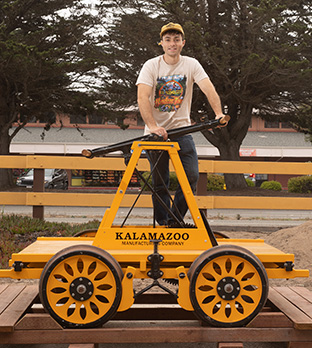
Alumnus Mason Clark Turns Passion for Building Handcars into Business

In the classic cartoon “Road Runner,” they’re used by Wylie Coyote to attempt – and fail – to catch his crafty bird nemesis.
From the mid-1800s to the early 1900s, they were tools used to transport maintenance workers to train tracks in need of repair.
For Mason Clark, railroad handcars are both a passion and a business. Clark (’19, mechanical engineering), a railroad buff since he was a young boy, developed an interest in handcars specifically when he was around 12.
“It’s a very niche activity,” he says. “There are only a few people in the country that own one.”
Clark, who owns and operates Handcar Tours in Marina (about 15 miles north of Monterey), has more than two dozen handcars – 13 of the manual variety that operate a lot like a rowing machine and 14 of the electric kind that riders pedal. The Santa Clarita resident works a full-time engineering job during the week, and then heads up to Marina on the weekends to provide tourists the opportunity to ride the rails overlooking the Pacific Ocean and through historic parts of the Central Coast. He opened Handcar Tours with his father in July 2021 and tested the concept for about three months. They had about 5,000 riders that summer season, Clark says.
“After that, we kind of reconfigured,” he says. “We looked at what were the next steps we needed to do to make this more permanent.”
Clark spent over a year getting the necessary permits and permissions to operate permanently and re-opened in 2022. They leased a property that includes a portion of unused railroad tracks from the city, cleared out weeds and debris, built and painted a fence to border the land, and constructed a small building that serves as the ticket office.
Since re-opening in 2022, Clark estimates the company has had around 10,000 riders.
Not bad for what started as his college senior project.
The old-fashioned handcar, which Clark built as a teen, features a platform that riders stand on, as well as a pump that makes the handcar go. For his senior engineering project, he built a new car with seats and pumps for four riders – a novel invention of his own.
“It was an improved version of the original car from the 1800s,” he says. “It was very unique at the time.”
After college, he designed and developed the electric rail bike version, which is less physically challenging than the manual handcars.
His original handcars cost approximately $30,000 each to build.
“That wasn’t intentional,” he says. “But when you start building and designing, you might need to change a project while you’re doing it. If you make a mistake in school, you can retake the class. When you’re building a project like these handcars, the punishment is the loss of lots of money. I look back at it and realize it is not the end of the world.”
The mechanical engineering program was challenging but enabled him to grow. “It was a little brutal at times, but that’s to be expected when you do an engineering degree, especially at a program like Cal Poly Pomona,” he says. “Being able to learn on my own and figure things out is something I got out of it. Some of the professors were very industry-minded and that helped.”
A Family Affair
On a recent fall Sunday morning, overcast skies blanketed the tracks in Marina. But that didn’t affect the riders as all tours for that day were sold out. Clark briefs the group on safety and operating the handcars before they take off on six-mile roundtrip tour that goes through the Fort Ord State Park and includes a crest where the ocean can be seen on a clear day.
The business is truly a family affair.
Clark’s mom, Donnalee Clark, helps load the cars on the track and prepares the riders for takeoff. She says she doesn’t consider herself a part of the business. She just does what she can to support it.
His dad, Todd Clark, handles the finances and helps with operations.
Todd describes his son as focused, determined and hardworking, traits that have helped Mason launch a successful small business, even while working a full-time job.
“It’s his dedication,” Todd says. “He’s a go-getter. To take this on like he did is just amazing.”
Mason has always been a self-learner, Todd says, adding that, as a teen, his son was building and selling handcars across the country and internationally to Canada and France.
“That’s what got him into mechanical engineering and how he got to Cal Poly Pomona,” Todd says.
Clark credits Cal Poly Pomona, in part, for giving him the skills necessary to make his handcar dreams a reality.
“I couldn’t do what I have done with the handcars without the knowledge I gained from school,” he says.
The mechanical engineering program was challenging but enabled him to grow. “It was a little brutal at times, but that’s to be expected when you do an engineering degree, especially at a program like Cal Poly Pomona,” he says. “Being able to learn on my own and figure things out is something I got out of it. Some of the professors were very industry-minded and that helped.”
Now, as a business owner, Clark is getting a whole other kind of education.
He is the engineer, marketing specialist, gardener and human resources director. He also serves as a guide on the tours, with the weekends averaging as many as five two-hour group tours a day. Clark also has hosted social media influencers to ride and share their experience, something he wasn’t particularly well-versed in prior to starting his business.
“I never realized how deep I would be in social media,” he says. “I had to learn how it worked.”
In a way, his engineering education at Cal Poly Pomona prepared him to solve problems outside of engineering, too.
“When you have an idea in your head, I like to think that almost everything is possible. You use your engineering skills to figure out how to make it work,” he says.
Building handcars, owning a business and showing people the beauty of California’s Central Coast is fun, but it is work too, he says.
“I came up with the idea thinking it would be a fun venture,” Clark says. “It has been fun, but it has been harder than I ever imagined. There are so many challenges that come with running a business like this.”

Cole Briggs The Tech Expert
Computer Information Systems Alumnus Helps People Connect, and Manage Their Time at Google
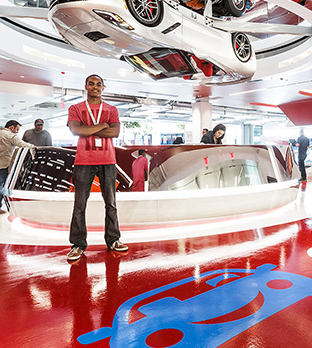
Computer Information Systems Alumnus Helps People Connect, and Manage Their Time at Google

Billions of consumers around the world use Google Workspace to connect, create and collaborate. Of those users, many choose Google Chat, Calendar and Tasks to help them keep track of their day-to-day appointments and to-do’s, and communicate with friends and business colleagues.
One of the team members responsible for working with colleagues to define product requirements, grow usage and engagement, lead positioning, naming and other go-to-market activities is Cole Briggs.
Briggs (‘19, computer information systems) is a product marketing manager for the company.
“My goal is to understand the market and customer base and use that to inform the products we build, the way we talk about them, and the way we grow usage,” Briggs says. “Another part of my job is engaging with our users and using their insights to make our products better.”
Briggs’ favorite part about his role is working with large customers to understand their needs and transcribing those into features to implement into the products. For example, through customer feedback, Briggs was able to help a large multinational organization move tens of thousands of users from a competing product to Google Chat for their daily communication needs.
He has been working in marketing at Google since graduating from Cal Poly Pomona, but feels ready for a job rotation, so he can continue to develop and grow. Soon, he will be switching to a product manager position at Google, which will enable him to work more closely with the company’s engineers and designers to directly build features for Workspace products.
Briggs’ technical know-how comes not only from his work experience at Google and his degree in computer information systems, but also from the internships he participated in during the summers between school years at CPP.
He was a product management intern at Edmunds, an automotive reviews and inventory company. In this internship, he began to learn and develop an understanding of how product teams comprised of product managers, engineers, and designers work together to build solutions for customers. It was then that he discovered his interest in the technology field.
When Briggs started college at CPP, he was a marketing major. However, after realizing his interest in tech that summer at Edmunds, he decided to change to computer information systems. He wanted to study tech and still be able to stick with his roots in marketing – and business as a whole – and CIS fit the bill.
While navigating his CPP journey, Briggs had a few mentors who guided him along the way.
“My goal is to understand the market and customer base and use that to inform the products we build, the way we talk about them, and the way we grow usage,” Briggs says. “Another part of my job is engaging with our users and using their insights to make our products better.”
Briggs credits Professors Tarique Hossain and Wesley Avery for helping him think about different career options and giving advice to help him succeed in building his knowledge base and planning his career.
Another mentor is Political Science Professor and Founder of the Prison Education Project, Renford Reese, who had an indelible impact on Briggs throughout his college experience. They met when Briggs attended the Residential Intensive Summer Education (R.I.S.E.) summer program, prior to becoming a student at CPP. This program assists high school students and incoming first-year CPP students in navigating the college transition and/or application process, while centering on the experience of Pan African students.
After hearing Reese’s speech at R.I.S.E., Briggs was convinced on attending CPP.
“A lot of Black men struggle with the expectations of their peers to be ‘cool’ and have a ‘gangster thug’ persona,” Briggs says. “I struggled a lot with this in high school, and the turning point was Dr. Reese giving me permission to be a weird, nerdy, and studious person without shame. He told me, “‘You are what you read’ and encouraged me to augment my CPP classes with educational books outside of school.” Briggs was most proud when he was able to complete a 100-book challenge and present the list of books to Dr. Reese before graduation.
Briggs also volunteered for Reese’s Prison Education Project, teaching weekly classes ranging from marketing to career development in rehabilitation facilities to incarcerated people. It helped him build empathy and understanding how differently many people experience our world.
“I’m extremely thankful to my professors, mentors, and friends I met at Cal Poly Pomona for helping to make me who I am today.”

Daniel Aley The Designer
How a graphic design grad uses visual communication to bring interstellar stories back down to earth
How a graphic design grad uses visual communication to bring interstellar stories back down to earth

When was the last time you thought about how you were interacting with a website? Or how the visuals used by a company made you feel?
For Daniel Aley (’19, graphic design), design is more than the elements you see on a page or screen — it is part of how we experience the world.
“Design has always been about the journey to become who we are and the story we wish to tell people through our visual systems and language,” he says. “Design is a poetic story that many people, with different backgrounds and skillsets, are a part of.”
Aley is a user interface (UI), user experience (UX) and visual designer at the hyperspectral monitoring startup Orbital Sidekick. Through its constellation of GHOST satellites, the company makes global monitoring and imaging accessible to key industries such as energy, agriculture, defense and more.
These satellites use hyperspectral imaging (HSI), gathering information from across the electromagnetic spectrum to show more than what is visible to the human eye. They can “chemically fingerprint” the Earth and reveal areas of high greenhouse gas emissions, methane detections and more. As Aley says, Orbital Sidekick seeks to “solve the most pressing operational, environmental and safety problems in real time.”
His role is to make that data user-friendly for their clients. He manages the UI and UX of the SIGMA Platform, the company’s customer-facing reporting system. The SIGMA Platform encompasses two products: SIGMA Monitor, for persistent monitoring and insights, and SIGMA Data, for satellite tasking, HSI data and imagery. As the company’s only designer, he also oversees the visual design for the entire company, balancing user needs with product strategy and marketing.
How does a designer end up in the space field? For Aley, it all comes back to his integrative approach to design.
While at Cal Poly Pomona, he built an active and robust portfolio. He supplemented his graphic design courses with those in computer information systems, satisfied his curiosity for human-centered design by conducting cognitive and behavioral studies and developing an educational mobile application with the Office of Undergraduate Research, and spearheaded the visuals for the Liquid Rocket Lab and NASA-CPP Business Startup. And that’s not even half of his collegiate activities!
“Cal Poly Pomona was a place that allowed me to explore many avenues of knowledge while learning more about myself and who I wanted to become. If I can continue to pass that experience on to current students, I know it was all worth it.”
“I did not want to specialize in something,” he says. “Instead, I enjoyed the variety of these programs and how they exposed me to other ideas and pedagogy.”
Faculty and staff from various departments nurtured Aley’s broad interests. Professor Anthony Acock, chair of the art department, highlighted the need for empathy in design, Associate Professor Adam King, mathematics and statistics, underscored the importance of using quantitative and qualitative data. And the late Angela Shih, mechanical engineering professor, emphasized the significance of an interdisciplinary approach. These mentors and more shaped him into a well-rounded, human-centric designer ready to take on the galaxy.
Upon graduation, alumnus Ming Tai (’96, graphic design), chair of the graphic design department at ArtCenter College of Design in Pasadena, referred Aley for a UI/UX design engineer position at NASA-Jet Propulsion Laboratory. As a contractor for the Deep Space Network’s Operation and Maintenance team, he worked on the interfaces and infrastructure of internal digital tools.
His work allowed his colleagues to capture and tell the stories of deep space more efficiently. He collaborated with mission planners, engineers, and facility members to understand and address their needs. His drive to keep growing and further develop his understanding of the world sent him onto even newer frontiers with OSK.
Aley relishes seeing his designs come to life – to see people use and interact with the platforms he creates, respond to the visuals and achieve their goals through his work.
He is still an active part of the art department, returning to help mentor students and critique their designs. He challenges them to critically evaluate their projects and understand the stories they are trying to tell, much like guest critics did for him as a student. He also recently joined the College of Environmental Design Dean’s Advisory Council.
“Cal Poly Pomona was a place that allowed me to explore many avenues of knowledge while learning more about myself and who I wanted to become. If I can continue to pass that experience on to current students, I know it was all worth it.”

Vincent Marsala The Builder
Civil Engineering Alumnus Makes Early Career Mark on SoFi Stadium
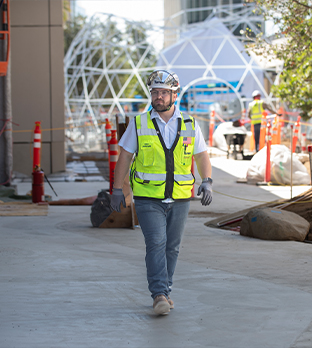
Civil Engineering Alumnus Makes Early Career Mark on SoFi Stadium

“The Builder” is a fitting vocation for the 2017 civil engineering alumnus, who comes from a family of builders.
His grandfather had a farm and was a carpenter. One uncle was a homebuilder, and another was a cabinet maker.
“I was always pretty savvy about how to put things together and take them apart,” Marsala says.
The Oneida, New York, native went from helping on his grandfather’s farm and building carpentry projects at home to assisting a large team with managing the construction of an NFL football stadium.
Though he’s already achieved many career milestones after graduating from Cal Poly Pomona, he didn’t originally intend to go to college. As a teenager, Marsala wanted to join the Marines.
“I started going to Marine recruiting and training events in the 9th grade,” he says.
Marsala enlisted at 17 and attended boot camp at Parris Island, South Carolina, a week after his 18th birthday. From there, he completed Marine combat training at Camp Lejeune and military occupational specialty school at Fort Lee, Virginia. Marsala spent his entire time stationed at the Marine Corps Air Ground Combat Center at Twentynine Palms in the Mojave Desert, working as an aviation bulk fuel specialist. In 2008, Marsala became a combat veteran, deployed to Iraq in support of Operation Iraqi Freedom and Operation Enduring Freedom.
After four years of honorable service, he used his GI Bill benefits at Long Beach City College. He later transferred to Cal Poly Pomona in 2012, the same year that the Veterans Resource Center opened at Cal Poly Pomona.
“Veterans are the volunteers, we’re the yes people, we’re the doers,” he says. “We put the mission before ourselves and if there is an opportunity to help someone else, that’s what we do.”
Initially, he didn’t want people to know he was a veteran. He just wanted to be a college student and fit in to society. But over time, he found that he was missing vital camaraderie with other student veterans. From then on, not a day went by without him stopping by the Veterans Resource Center on campus.
Marsala credits the VRC with helping change his life, and he tries to give back by returning to campus and participating in veteran events.
“Without the VRC, I don’t know that I would have graduated college,” he says.
The VRC provided a space where Marsala could connect with other veterans and utilize valuable educational resources. He eventually applied for an open position at the VRC and became the first veteran student ambassador for the College of Engineering. In 2017, Marsala was the recipient of the Student Veteran of the Year award.
“Veterans are the volunteers, we’re the yes people, we’re the doers,” he says. “We put the mission before ourselves and if there is an opportunity to help someone else, that’s what we do.”
While at CPP, Marsala found opportunities early.
As a junior at CPP, he got an internship with Shimmick Construction and did quality control on the replacement of the iconic Gerald Desmond Bridge in Long Beach. The experience made such an impression that he knew he wanted a career in construction.
As a senior, he attended the engineering career fair and connected with a CPP engineering alumnus who was recruiting for Turner Construction Co., which led to his first career job in the field.
His first assignment was the $5.5 billion SoFi Stadium, the most expensive stadium ever built. The week after graduation, he was working in Inglewood as a quality control engineer for Turner Construction. Within a few months, Marsala became a superintendent and worked at SoFi until its completion in 2021, serving on a team that oversaw project safety, construction quality, site logistics, budget and construction schedule.
“Everyone has their own blueprint,” says Marsala. “There’s no one path to success or failure. It takes everyone working together to accomplish anything. Being able to impact a person, a community and be part of monumental projects is truly gratifying.”
Marsala’s next stop was in San Diego, where he now works as the self-perform operations and lean manager on several Turner projects including the New Terminal 1 San Diego International Airport and the Research and Development District (RADD), 8 acres along the waterfront. The RADD, California’s largest waterfront project, will include space for mixed-use life sciences, commercial office space, restaurants, and retail space across six city blocks.
Even though he had opportunities to work on major projects from the start of his career, Marsala says that being part of a team of builders and building relationships is what he has enjoyed the most about what he does.
“Everyone has their own blueprint,” says Marsala. “There’s no one path to success or failure. It takes everyone working together to accomplish anything. Being able to impact a person, a community and be part of monumental projects is truly gratifying.”

